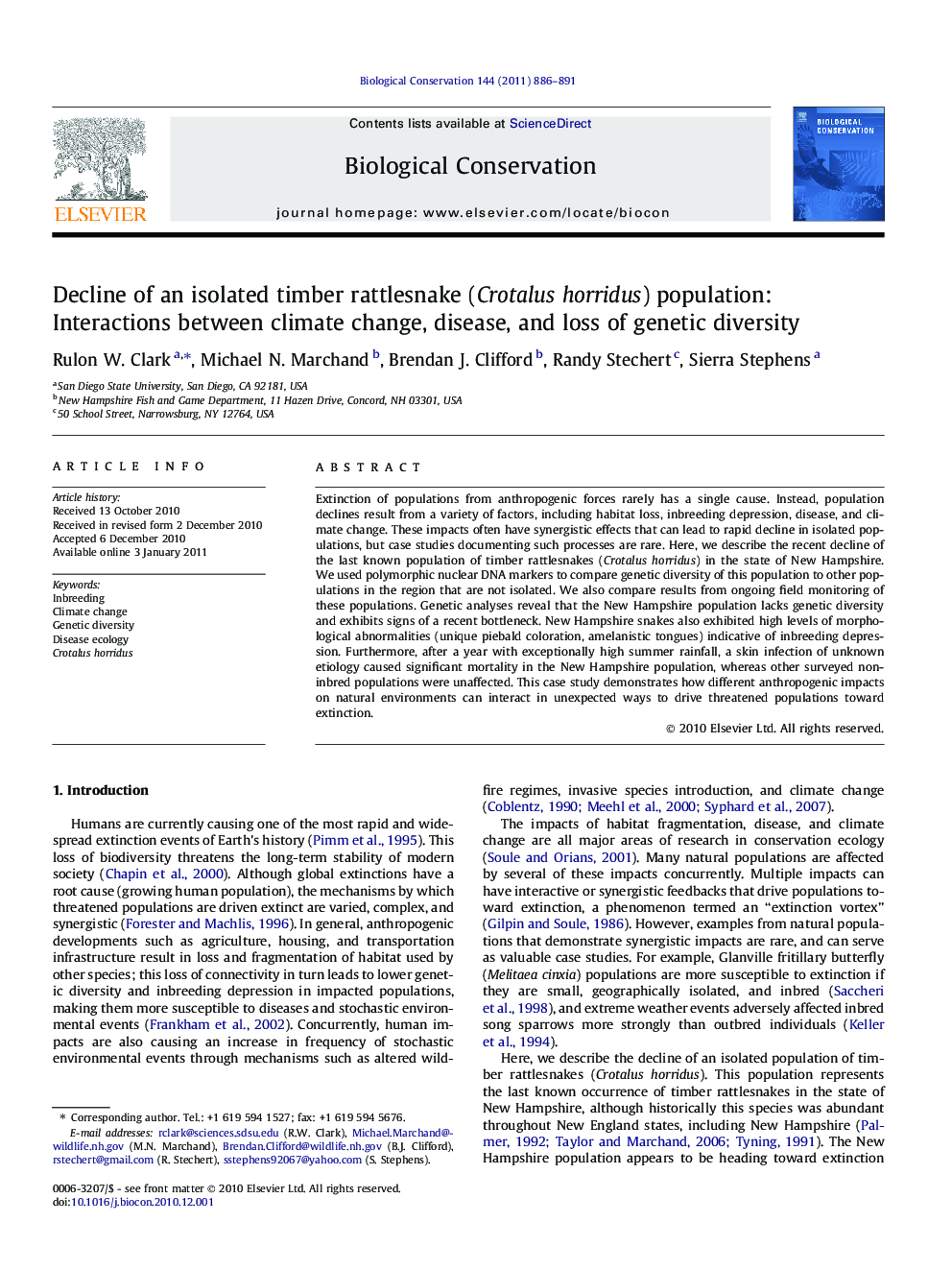| کد مقاله | کد نشریه | سال انتشار | مقاله انگلیسی | نسخه تمام متن |
|---|---|---|---|---|
| 6301265 | 1304542 | 2011 | 6 صفحه PDF | دانلود رایگان |
عنوان انگلیسی مقاله ISI
Decline of an isolated timber rattlesnake (Crotalus horridus) population: Interactions between climate change, disease, and loss of genetic diversity
دانلود مقاله + سفارش ترجمه
دانلود مقاله ISI انگلیسی
رایگان برای ایرانیان
کلمات کلیدی
موضوعات مرتبط
علوم زیستی و بیوفناوری
علوم کشاورزی و بیولوژیک
بوم شناسی، تکامل، رفتار و سامانه شناسی
پیش نمایش صفحه اول مقاله

چکیده انگلیسی
Extinction of populations from anthropogenic forces rarely has a single cause. Instead, population declines result from a variety of factors, including habitat loss, inbreeding depression, disease, and climate change. These impacts often have synergistic effects that can lead to rapid decline in isolated populations, but case studies documenting such processes are rare. Here, we describe the recent decline of the last known population of timber rattlesnakes (Crotalus horridus) in the state of New Hampshire. We used polymorphic nuclear DNA markers to compare genetic diversity of this population to other populations in the region that are not isolated. We also compare results from ongoing field monitoring of these populations. Genetic analyses reveal that the New Hampshire population lacks genetic diversity and exhibits signs of a recent bottleneck. New Hampshire snakes also exhibited high levels of morphological abnormalities (unique piebald coloration, amelanistic tongues) indicative of inbreeding depression. Furthermore, after a year with exceptionally high summer rainfall, a skin infection of unknown etiology caused significant mortality in the New Hampshire population, whereas other surveyed non-inbred populations were unaffected. This case study demonstrates how different anthropogenic impacts on natural environments can interact in unexpected ways to drive threatened populations toward extinction.
ناشر
Database: Elsevier - ScienceDirect (ساینس دایرکت)
Journal: Biological Conservation - Volume 144, Issue 2, February 2011, Pages 886-891
Journal: Biological Conservation - Volume 144, Issue 2, February 2011, Pages 886-891
نویسندگان
Rulon W. Clark, Michael N. Marchand, Brendan J. Clifford, Randy Stechert, Sierra Stephens,